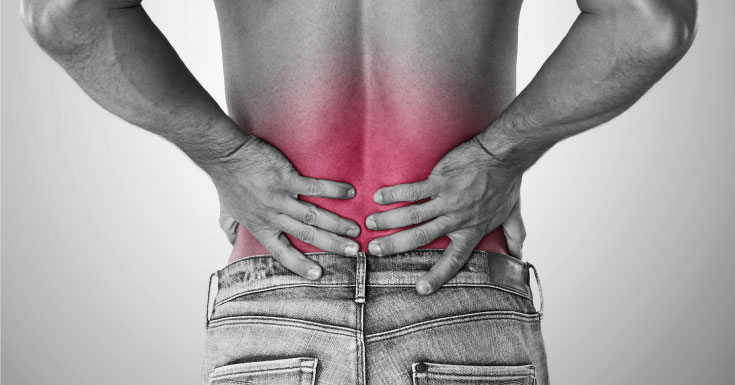The COVID-19 pandemic presented its own set of challenges, impacting social, economic, mental and physical well-being. One key health element that took a back seat during the pandemic was bone health.
Termed as the “silent disease,” orthopaedic conditions such as osteoporosis often go underreported because people are not aware of them or underestimate their seriousness – this results in undertreated cases. The misconception that bone diseases are only seen in an ageing population contributes to the ignorance surrounding bone health.
This lack of concern for bone health became even more prevalent during the pandemic. In fact, over 90% of elective orthopaedic cases in Malaysia were postponed or cancelled due to anxiety surrounding the pandemic.
Delayed assessments, lack of testing, reluctance in obtaining the right consultation and low levels of physical activity may have consequences on our bone health, both immediate and far-reaching.
As we move into the new phase of recovery from the pandemic, we need to take a renewed interest in our bone health and make our musculoskeletal health a priority again. Let’s begin by understanding the impacts the pandemic has had on our overall health.
How the Pandemic Impacts Our Bones And Muscles
One of the key factors that led to an increased incidence of bone and joints related problems during the pandemic can be attributed to low levels of physical activity. Physical activity is a key factor for maintaining bone and muscle mass and prolonged periods of no movement directly impact your muscles and bones, especially bone mineral density.
Working from home has been another contributing factor to declining bone health, in addition to low periods of physical activity. The ALTY Orthopaedic Hospital reported an increase in young adults complaining about lower back pain and shoulder spasms linked to working from home. Long hours in front of a screen, poor posture, hunched back, and a lack of access to ergonomic seating can all have a direct effect on your spine and back. The pandemic and a change in regular working habits is proof of the impact that poor posture and inactivity can have on our overall health and well-being.
Another factor that often influences bone metabolism is Vitamin D. The lack of exposure to the sun for months on end during the pandemic has raised the risk of vitamin D deficiency, especially within individuals who do not take daily supplements. The deficiency of this crucial vitamin can lead to several conditions, including osteoporosis.
Weight gain can be another reason for poor bone health. The pandemic left people with no time to exercise and little self-control, leading them to an unbalanced diet that led to weight gain. This sudden increase put pressure on the joints, increasing the risk of painful joints in addition to other health conditions.
The Care Gap and Associated Issues
The greatest challenge posed by the pandemic was that it interrupted the delivery of appropriate medical care to patients. With healthcare resources diverted to manage the spread of infections and treat those who tested positive, several other chronic illnesses were put to the curb. Unfortunately, this meant that patients with bone ailments such as arthritis, osteoporosis etc., were not given the immediate care they deserved. Prolonged procedures, missed doctor appointments, and closure of physical therapy centres are some factors that could contribute to long-term consequences for patients, such as an increase in symptoms or disease progression.
The pandemic also saw a lack of patient follow-ups as people feared contracting infections in hospital settings. This meant that many patients who needed medications and more tests did not make the necessary visits to hospitals. This was especially damaging for fracture patients, who need frequent check-ups and physical therapy.
Get Back On Track With Your Bone Health
With restrictions slowly easing and hope for normal routines to return, it is time to take that healthcare priority list again and give special preference to your bone and muscle health.
Talk to your doctor
If you have been suffering from aches and pains or have an already diagnosed bone ailment such as osteoporosis, setting up a consultation with your doctor should top that list. During your meeting with the specialist, try to understand the progress of your condition, schedule appointments for assessment and tests (if needed) and set a time for a second follow-up meeting. You can also try to speak with your doctor to see if you need additional physical therapies or make any lifestyle adjustments to reach your health goals.
Lifestyle modifications
Next on the list should be making lifestyle changes if you haven’t started doing so already. Set up a proper workstation at home if you don’t plan to step into the office soon. Make sure that you invest in an appropriate table and chair setting with a laptop stand that allows you to maintain a good working posture. Include 4-5 days of light intensity workouts such as jogging, yoga, swimming and cycling to your daily routine. These exercises will strengthen your joints, keep you flexible, and help you lose weight in the process.
Diet and nutrition
Adjusting your diet can also play a significant role in ensuring good musculoskeletal health. Talk to your physician about including supplements like Vitamin D, calcium, and zinc in your diet. You can also up your intake of whole foods like milk, eggs, salmon, green leafy vegetables, and lean cuts of meat to give your body the nourishment it deserves.
Learn about bone health
Finally, take the time to educate yourself more about the importance of maintaining good bone health. To educate Malaysians about common bone ailments such as arthritis, osteoporosis, and spondylitis, ALTY Orthopaedic Hospital put together an ALTY-mate bone care month to share multiple resources, videos with experts and bite-sized content on social media to make information more accessible.

Consultant Orthopaedic & Sports Surgeon
ALTY Orthopaedic Hospital
















